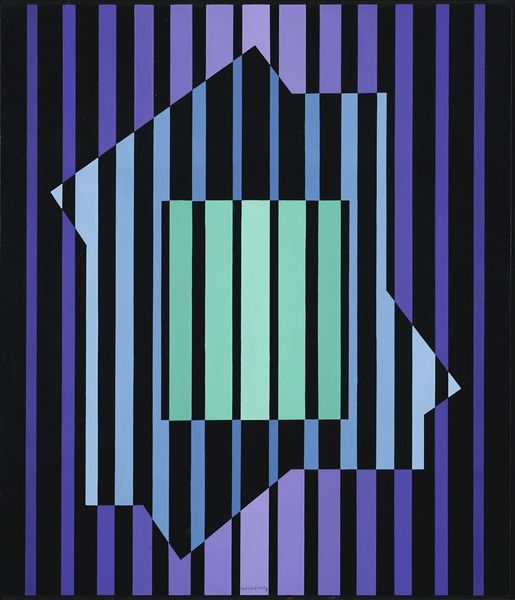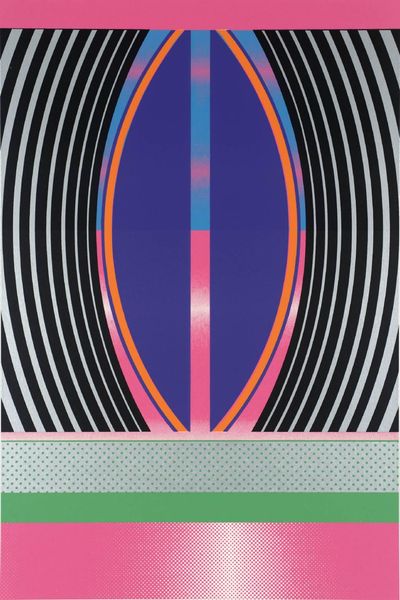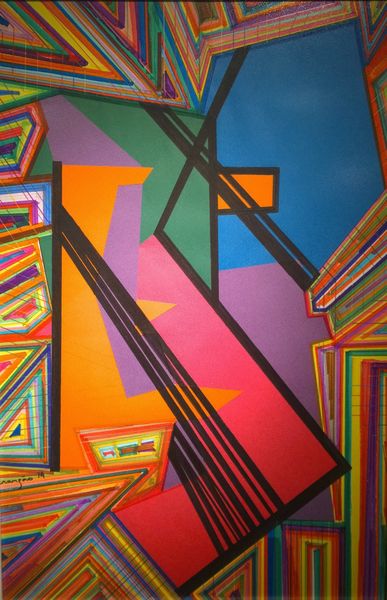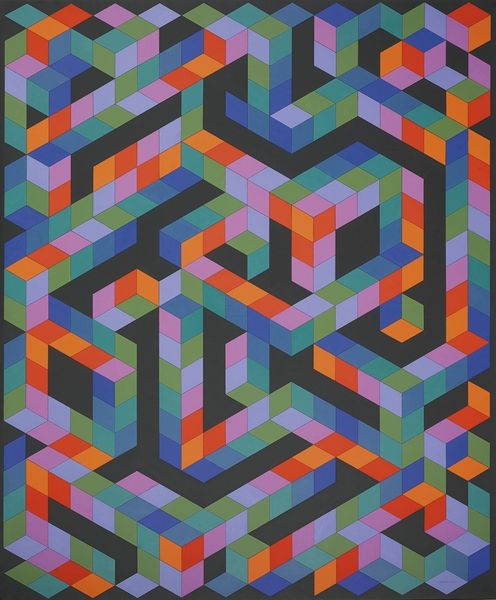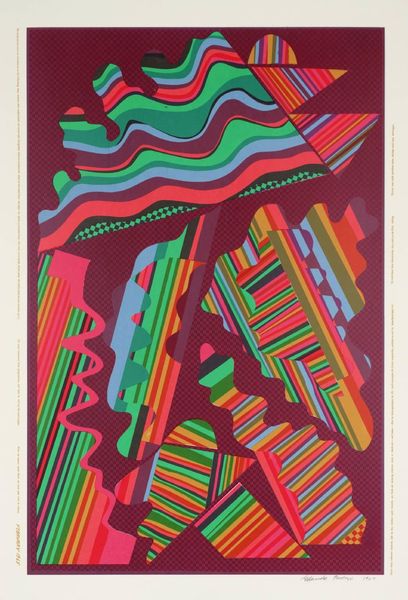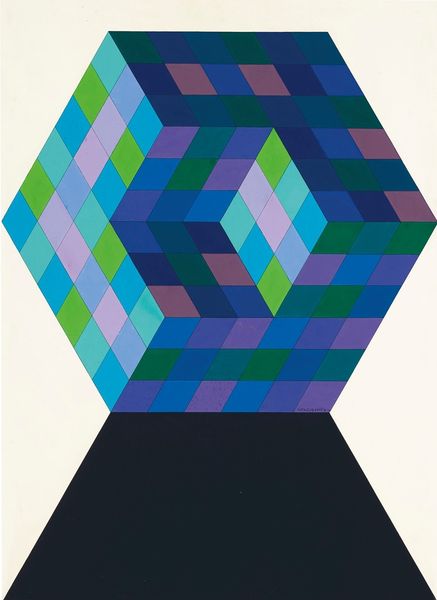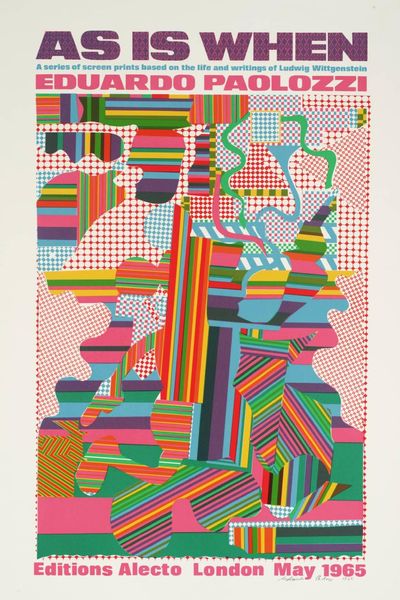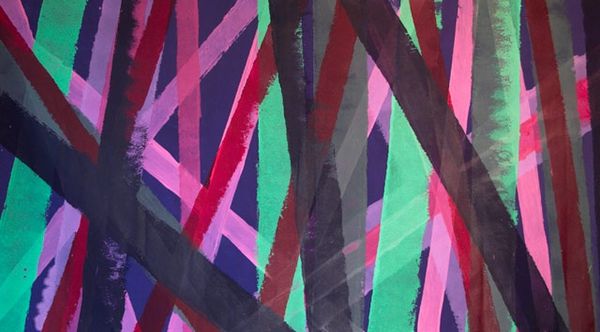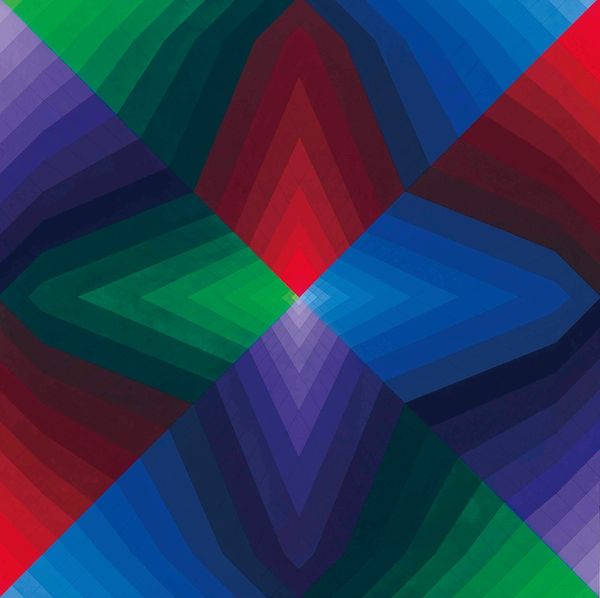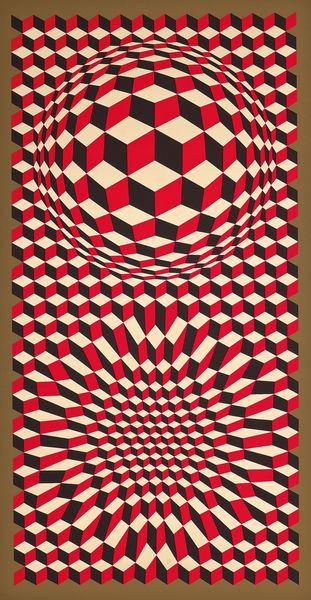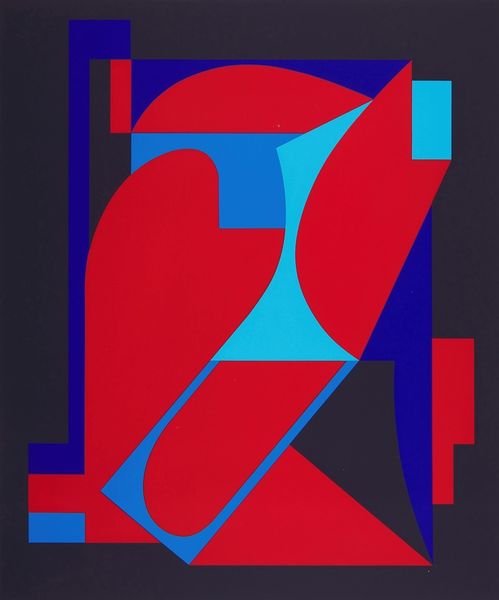
mixed-media, tempera, acrylic-paint
#
mixed-media
#
op-art
#
tempera
#
acrylic-paint
#
form
#
geometric pattern
#
geometric
#
geometric-abstraction
#
modernism
Copyright: Modern Artists: Artvee
Editor: So, this is Vasarely’s *TZALOKA*, created between 1982 and 1985. It’s a mixed-media piece using tempera and acrylic. I'm really struck by the optical illusion and how the shapes seem to vibrate. How would you interpret this work, particularly considering Vasarely's broader artistic aims? Curator: Vasarely was a key figure in Op Art, and this piece exemplifies the movement's focus on how perception is culturally conditioned. It is geometric abstraction. Consider how these illusions challenge our understanding of space, line, and color. What role do you think the title, "TZALOKA", plays? How might a viewer unfamiliar with Op Art initially react to this piece compared to someone familiar with its history and context? Editor: That’s a great question about the title - it seems like Vasarely made that name up. And someone unfamiliar with Op Art might dismiss this as just a pattern. For me it's an overwhelming and maybe slightly unsettling effect. Is there a political or social message behind these perceptual games? Curator: Many argue that Op Art aimed to democratize art by making it accessible to a wider audience, free from the need for specialized knowledge. It directly engages the viewer, blurring the lines between observer and art. Vasarely's work, in particular, aimed to create a universal visual language. What I find compelling is the idea that abstract art could be a force for social change, that challenging perception can, in turn, challenge societal norms. But I would ask you, to what extent do you find it does challenge you? Editor: I never considered that connection before. It’s interesting to think about how visual disruption can be a form of questioning authority or established ways of seeing the world. That opens a new way to view Op Art as a challenge. Curator: Exactly. Seeing it less as merely decorative but part of broader discussions. It also provokes thought around the institutions that support art production. These abstract geometric forms, in their original time, offered new challenges to perception in a gallery context and perhaps also the role that imagery plays. Editor: I’ll definitely remember this conversation! It’s provided some very interesting context. Thanks!
Comments
No comments
Be the first to comment and join the conversation on the ultimate creative platform.

